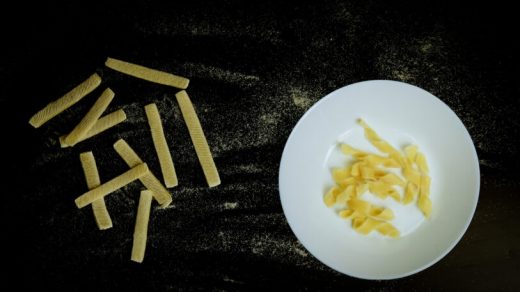Watch this flat-pack pasta transform into shapes as it boils
In a new study, researchers designed pasta that could pop up from a basic fettucine-like shape into a spiral as it cooks, or curl from a flat shape into a tube—not just because the transformation could make cooking dinner more entertaining, but because it could shrink the amount of packaging needed in the pasta aisle.
“We were inspired by furniture that can be flat-packed and shipped—I remember reading that Ikea can save a lot of money,” says Lining Yao, director of the Morphing Matter Lab in the Human-Computer Interaction Institute at Carnegie Mellon University and one of the authors of a new paper in Science Advances. “Food packaging waste is actually a pretty big problem, and we were thinking about whether we could make flat-packed food.”
When deconstructed sofas fit into smaller boxes, it’s possible to squeeze more of them into a shipping container, and ultimately save fuel. The same principle can apply to dinner. Surprisingly, Yao says, if macaroni was flat, it would use 60% less packaging space. Curly pasta shapes that are fragile would no longer need as much air in a box. That means both that less material is needed for the package, and that delivering the food could ultimately have a smaller carbon footprint.
Standard pasta already morphs as it cooks, changing size and getting softer. The researchers stamped tiny, carefully-placed grooves into the dough to make it also transform in shape. “The idea is to introduce grooves on a flat sheet,” she says. “You can essentially create a differential swelling. So the groove will swell more slowly than the regions that are exposed directly to the water.”
Though the paper didn’t evaluate the shape-shifting pasta’s taste, in informal tests, the researchers found that it cooks and tastes like normal pasta. But it does appear to cook slightly faster—another way that it could save energy.
Now, the researchers are beginning to talk to food manufacturers about pilot tests at a larger scale. “We want to collaborate with the food industry to really implement these vital manufacturing concepts and methods,” says Teng Zhang, a mechanical and aerospace engineering professor at Syracuse University who is collaborating on the project.
“When we started the project, it was more driven by scientific curiosity—whether a structure-based morphing mechanism could work,” says Yao. “But at this point, I’m more and more convinced that morphing structures could possibly contribute to the sustainable design of the future, especially the flat packaging concept. For furniture, you could use morphing plastic. For food, you could use morphing edible materials. All are becoming, I want to say, realistic economically.”
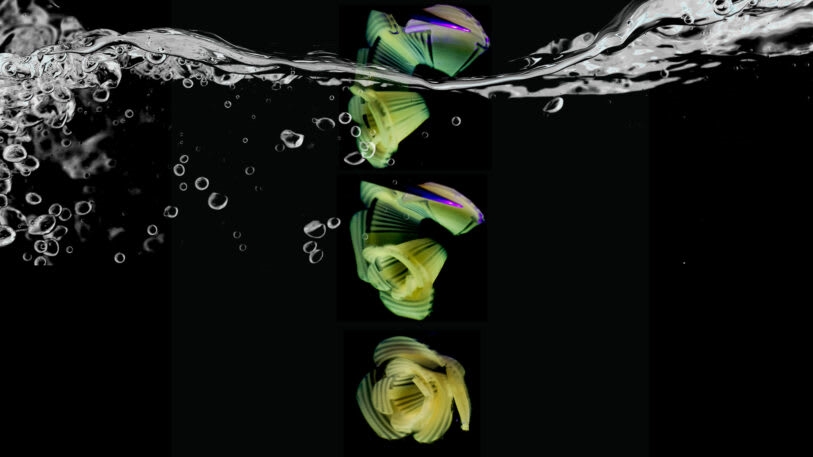
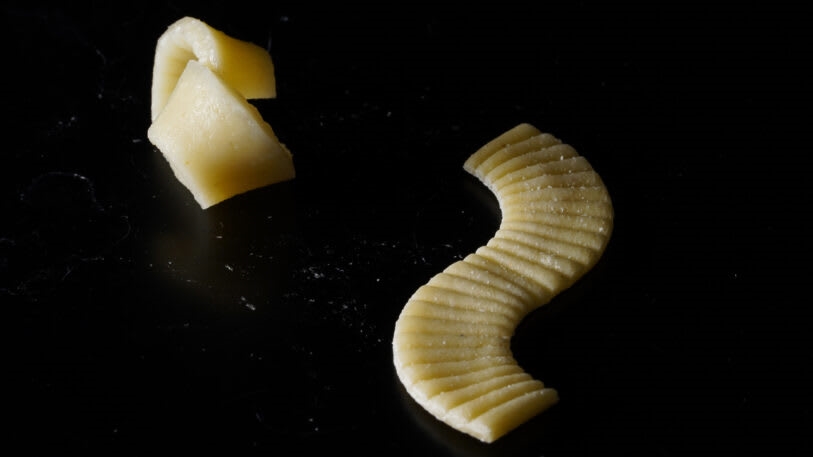
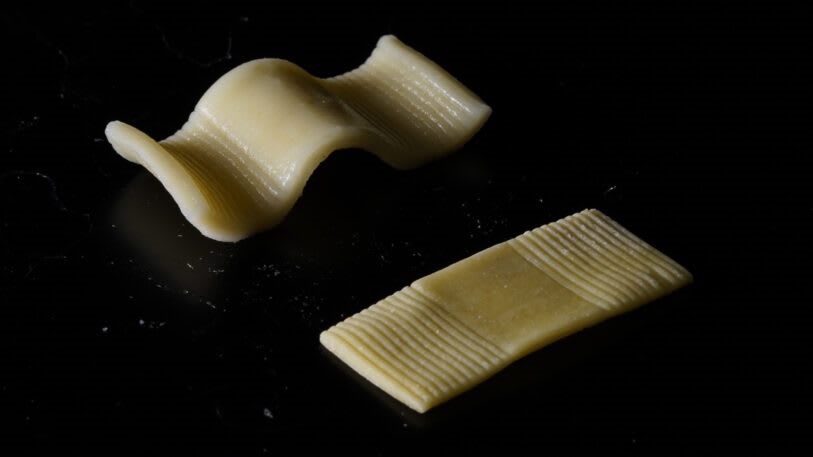
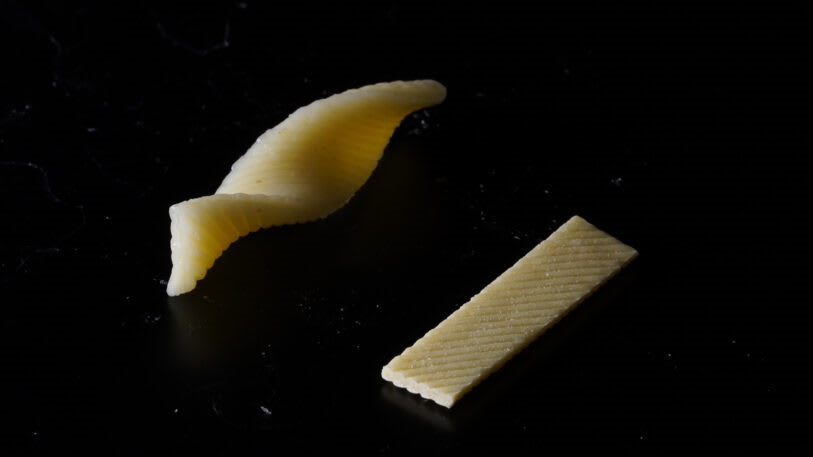
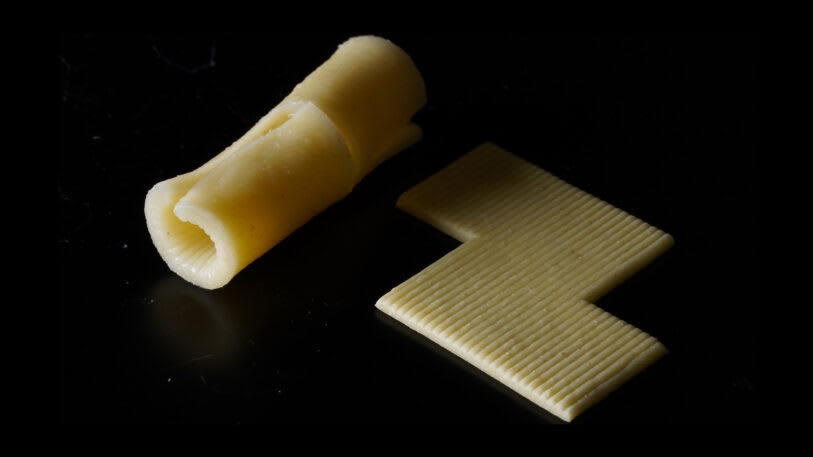
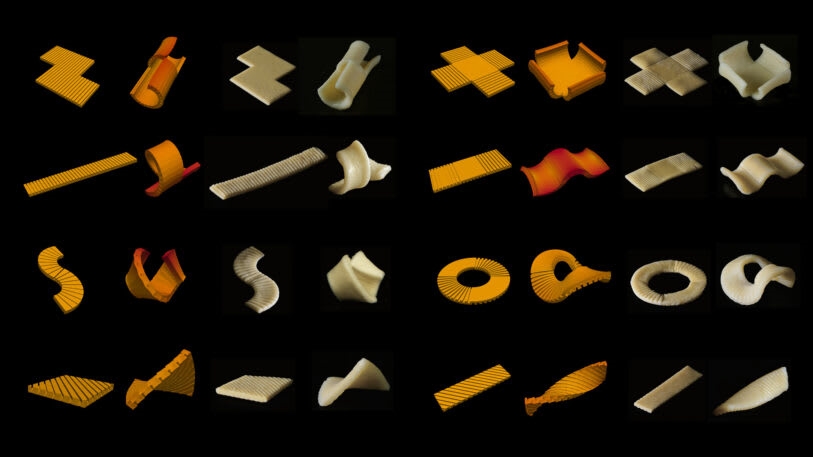
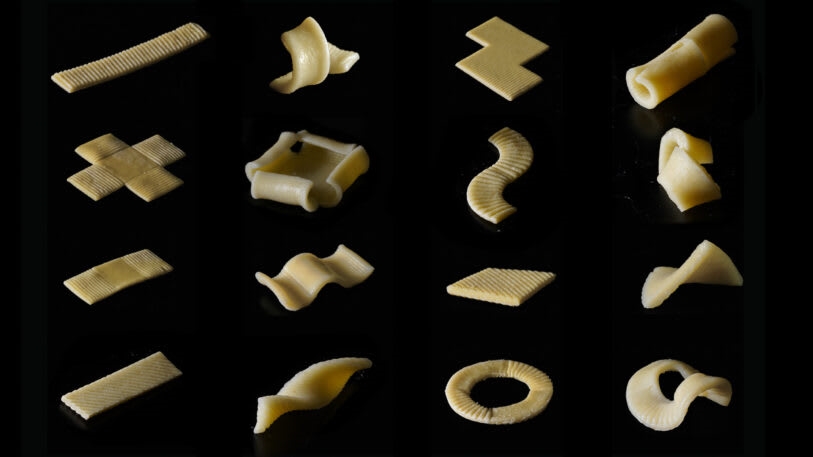
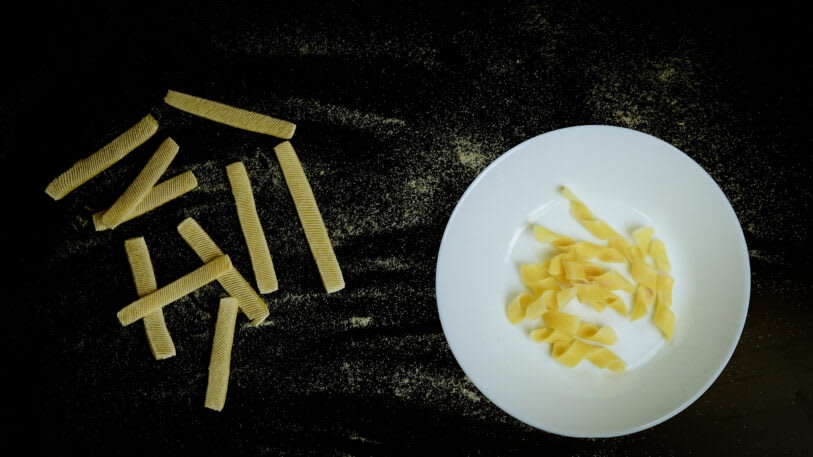
(23)

